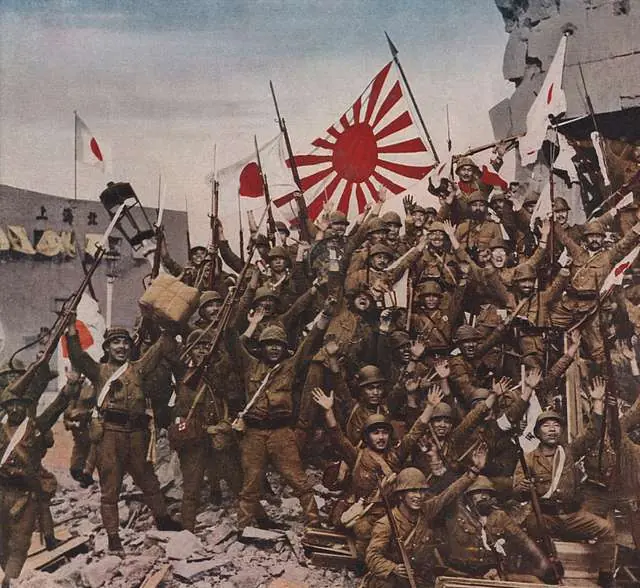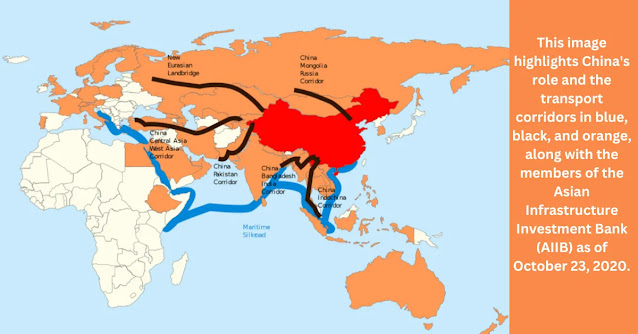From Xiongnu Incursions to the Great Wall: China’s Defensive Shift
The Great Wall of China is an ancient network of walls and barricades, spanning over 13,000 miles, situated in northern China. It is one of the most iconic symbols of China’s rich and extensive history. The idea for constructing the Great Wall was first conceived by Emperor Qin Shi Huang in the 3rd century B.C. with the primary purpose of stopping incursions from nomadic tribes.
 |
| Xiongnu
|
The most famous and well-maintained part of the Great Wall was founded during the Ming dynasty, spanning the 14th to the 17th centuries A.D. While the Great Wall did not always succeed in avoiding invaders from entering China, it advanced into a powerful symbol of the stable strength of Chinese civilization.
The construction of the Great Wall of China was motivated by a combination of historical, strategic, and political factors over several centuries. In this article, we will emphasize one of the main historical reasons for building the Great Wall, which was to protect against invasions by nomadic tribes from the northern steppes, particularly the Xiongnu, a confederation of nomadic peoples.
💻 Table of Contents:
- The Origins of the Xiongnu: Ethnic and Linguistic Theories
- Emperor Qin Shi Huang’s Legacy: The Great Wall of China
- Xiongnu: An Ancient Nomadic Confederation in the Eurasian Steppe
- The Historical Struggle: China’s Battle with Nomadic Barbarians
- The Fall of the Xiongnu: Legacy of the Han Dynasty’s Military Campaigns
The Origins of the Xiongnu: Ethnic and Linguistic Theories:
The Xiongnu, a nomadic pastoral people, emerged as a significant force in Central Asia during the 3rd century BCE. Under the leadership of the chanyu, their supreme ruler, the Xiongnu formed a powerful tribal confederation that posed a constant threat to the northern frontier of China.
The chanyu held a title equivalent to the Chinese emperor’s designation as the tianzi, or “son of heaven.” Known for their fierce mounted warriors, the Xiongnu controlled a vast territory extending from western Manchuria to the Pamirs, encompassing present-day Siberia and Mongolia. Their military prowess and sustained incursions into China prompted the construction of the Great Wall. The Xiongnu’s influence and interactions with China played a pivotal role in shaping the history of Central Asia.
The Xiongnu people, a prominent nomadic confederation in ancient Central Asia, have been subject to various theories regarding their ethnic and linguistic origins. Scholars have proposed several competing hypotheses, including Iranian, Yeniseian, Turkic, Mongolic, and a combination of multiple ethnicities.
Some scholars argue for an Iranian origin, citing linguistic and cultural evidence, while others suggest Yeniseian or Turkic roots based on linguistic and genetic studies. Mongolic theories have also been proposed, with some scholars connecting the Xiongnu to the ancestors of the Mongols.
Additionally, many researchers believe the Xiongnu were a multi-ethnic society, incorporating various linguistic and ethnic groups. Chinese sources also link several Turkic, Mongolic, and other nomadic peoples to the Xiongnu, reflecting the complexity of their origins. Despite ongoing debate, the precise ethnic and linguistic makeup of the Xiongnu remains uncertain, with their language and origins still a subject of scholarly investigation.
 |
| The Great Wall of China |
Emperor Qin Shi Huang’s Legacy: The Great Wall of China
Around 220 B.C., Emperor Qin Shi Huang, the inaugural ruler of a unified China during the Qin Dynasty, ordered the removal of earlier fortifications that separated different states, essentially instructing them to be taken down or disassembled. This was part of his effort to unify these defensive structures into a single continuous wall, which later became the Great Wall of China. He also directed the integration of existing walls along the northern border into a single extensive system. This massive attempt aimed to create a protective barrier spanning over 10,000 li, with each li being approximately one-third of a mile, to safeguard China from northern threats.
The construction of this colossal project, known as the “Wan Li Chang Cheng” or the “10,000-Li-Long Wall,” stands as one of the most ambitious architectural undertakings in the history of any civilization. It was overseen initially by the renowned Chinese general, Meng Tian, who reputedly oversaw the labor force comprising a vast number of soldiers, convicts, and common
citizens.
The Great Wall was constructed over centuries, starting from the 3rd century BC and lasting until the 17th century AD. It served as a massive military defense project for various Chinese Empires, extending for a total length of over 20,000 kilometers along the northern border of the country.
 |
| Chinese Great Wall |
The Great Wall commences in the east at Shanhaiguan in Hebei province and concludes at Jiayuguan in Gansu province to the west. The primary structure includes walls, paths for horses, watchtowers, and shelters. The structure also includes fortresses and passes along its span.
💻 You May Also Like:
- Mongol conquest of China: And Tourist Blogger Marco Polo
- United States of Turkic World: Turkey’s Ideological & Strategic Bridge in Eurasia
- Silk Road Showdown: Assassination and Turko-Chinese Rivalry in Central Asia
- The New Silk Road: Exploring China’s Belt and Road Initiative
Xiongnu: An Ancient Nomadic Confederation in the Eurasian Steppe
The Xiongnu were a confederation of nomadic tribes who lived in the eastern Eurasian Steppe from around the 3rd century BC to the late 1st century AD. Modu Chanyu, a leader from 209 BC, established the Xiongnu Empire. Modu Chanyu is also known as Mete Khan in several Turkic languages. The Turkish Land Forces consider 209 BCE, the start of his rule, as a symbolic founding date.
Recent studies suggest that the Xiongnu population likely spoke a Turkic language. However, genetic research reveals a mix of western and eastern Eurasian origins, implying a diverse genetic heritage among the Xiongnu, possibly from multiple sources. Chinese historical sources connect various Turkic peoples to the Xiongnu, including the Göktürks and the ruling Ashina tribe.
The Historical Struggle: China’s Battle with Nomadic Barbarians
The historical conflict between the barbarian nomads and Chinese dynasties spans several centuries and involves various nomadic groups that inhabited the steppes surrounding China. These conflicts were marked by a repeating target of invasions, raids, and discussions between the settled Chinese civilization and the nomadic tribes.
The conflict between the Chinese dynasties and the nomads primarily twisted around territorial
control, trade routes, and cultural clashes. The nomadic tribes, often called “barbarians” by the Chinese, were mainly made up of people who raised animals for their livelihood and practiced a semi-nomadic lifestyle. They included groups like the Xiongnu, Xianbei, Turks, Mongols, and others.
The Great Wall of China was constructed as a defensive measure against these nomadic incursions, particularly against the Xiongnu. The Chinese dynasties, such as the Han, Tang, and Ming, employed various strategies to deal with the nomads, including military campaigns, alliances, and diplomatic negotiations.
One of the most significant conflicts occurred during the Han Dynasty (206 BCE – 220 CE) with the Xiongnu. During the early years of the Han Dynasty, the Xiongnu posed a growing threat to the northern borders of China. The Xiongnu were skilled horse-riders and formidable warriors known for their military prowess. They frequently raided Chinese border towns and engaged in acts of pillaging and looting.
In response to these incursions, the Han Dynasty initially pursued a policy of appeasement and
sought to establish diplomatic relations with the Xiongnu. Emperor Wu of Han (r. 141-87 BCE) implemented a strategy known as the “Heqin” (“Peace and Family Relations”) policy, which involved offering princesses as marriage partners to Xiongnu leaders and providing them with annual tributes. The goal was to maintain peace and stability along the northern frontier.
 |
| Xiongnu Militia |
However, the Heqin policy proved to be ineffective in the long term. The Xiongnu continued their raids and demands for greater tributary payments from the Han Dynasty. Emperor Wu eventually abandoned the conciliation approach and adopted a more aggressive stance against the Xiongnu.
The Fall of the Xiongnu: Legacy of the Han Dynasty’s Military Campaigns
In 133 BCE, Emperor Wu launched a series of military campaigns against the Xiongnu. These campaigns aimed to assert Han control over the northern regions and protect Chinese territories from Xiongnu incursions. The Han Dynasty built fortifications, including the Great Wall of China, as a defensive measure against the Xiongnu.
The Han Dynasty’s military campaigns were initially successful, pushing the Xiongnu back and
establishing Han control over the Hexi Corridor, an important trade route to the Western Regions. However, the conflict was protracted and marked by intermittent periods of peace and warfare.
The conflict between the Han Dynasty and the Xiongnu continued throughout the centuries, with occasional flare-ups and periods of relative calm. The Xiongnu remained a significant force in the region, and their influence extended beyond military engagements. There were instances of cultural exchange and trade between the Xiongnu and the Han Dynasty, particularly along the Silk Road.
Ultimately, the Xiongnu confederation fragmented, and their power waned. In the later years of
the Han Dynasty, the Xiongnu were absorbed into the Chinese society, and some Xiongnu leaders even served as officials in the Han government.
The conflict between the Han Dynasty and the Xiongnu contributed to the development of the Han Dynasty’s military strategies, expansion of infrastructure, and the establishment of diplomatic relations with nomadic groups. It also shaped Chinese perceptions of the northern nomadic tribes and influenced subsequent interactions between sedentary Chinese civilization and the various nomadic groups of the region.
 |
| Fortification of the Great Wall of China |
Conclusion:
The Great Wall of China is not a continuous wall but rather a series of interconnected walls, fortifications, and natural barriers such as mountains and rivers. The construction of the wall began as early as the 7th century BCE and continued throughout different dynasties, including the Qin, Han, Ming, and others.
The purpose of the Great Wall was to protect China’s borders from external threats, particularly from nomadic groups that resided in the northern regions. It served as a defensive barrier and also facilitated border control, trade, and communication along its length. Today, the Great Wall of China stands as an iconic symbol of Chinese history and a UNESCO World Heritage Site. Its construction and cultural significance attract millions of visitors from around the world who come to admire its grandeur and explore its ancient history.
Frequently Asked Questions
The Xiongnu were a confederation of nomadic tribes who lived in the eastern Eurasian Steppe from around the 3rd century BC to the late 1st century AD. They were established as an empire by Modu Chanyu (also known as Mete Khan) in 209 BC and are considered ancestors of various Turkic peoples, including the Göktürks and the Ashina tribe. Genetic studies suggest they had a diverse heritage, with mixed western and eastern Eurasian origins.
The Great Wall of China was built primarily to protect against invasions by nomadic tribes from the northern steppes, particularly the Xiongnu, and to safeguard China's borders.
Emperor Qin Shi Huang, the first ruler of a unified China during the Qin Dynasty, ordered the construction of the Great Wall around 220 B.C.
The Xiongnu were a nomadic confederation that posed a constant threat to China's northern frontier, prompting the construction of the Great Wall and shaping Chinese military and defensive strategies.
The Great Wall of China spans over 13,000 miles (20,000 kilometers) along the northern border of the country. Who were the Xiongnu?
Why was the Great Wall of China built?
Who ordered the construction of the Great Wall of China?
What was the role of the Xiongnu in Chinese history?
How long is the Great Wall of China?








